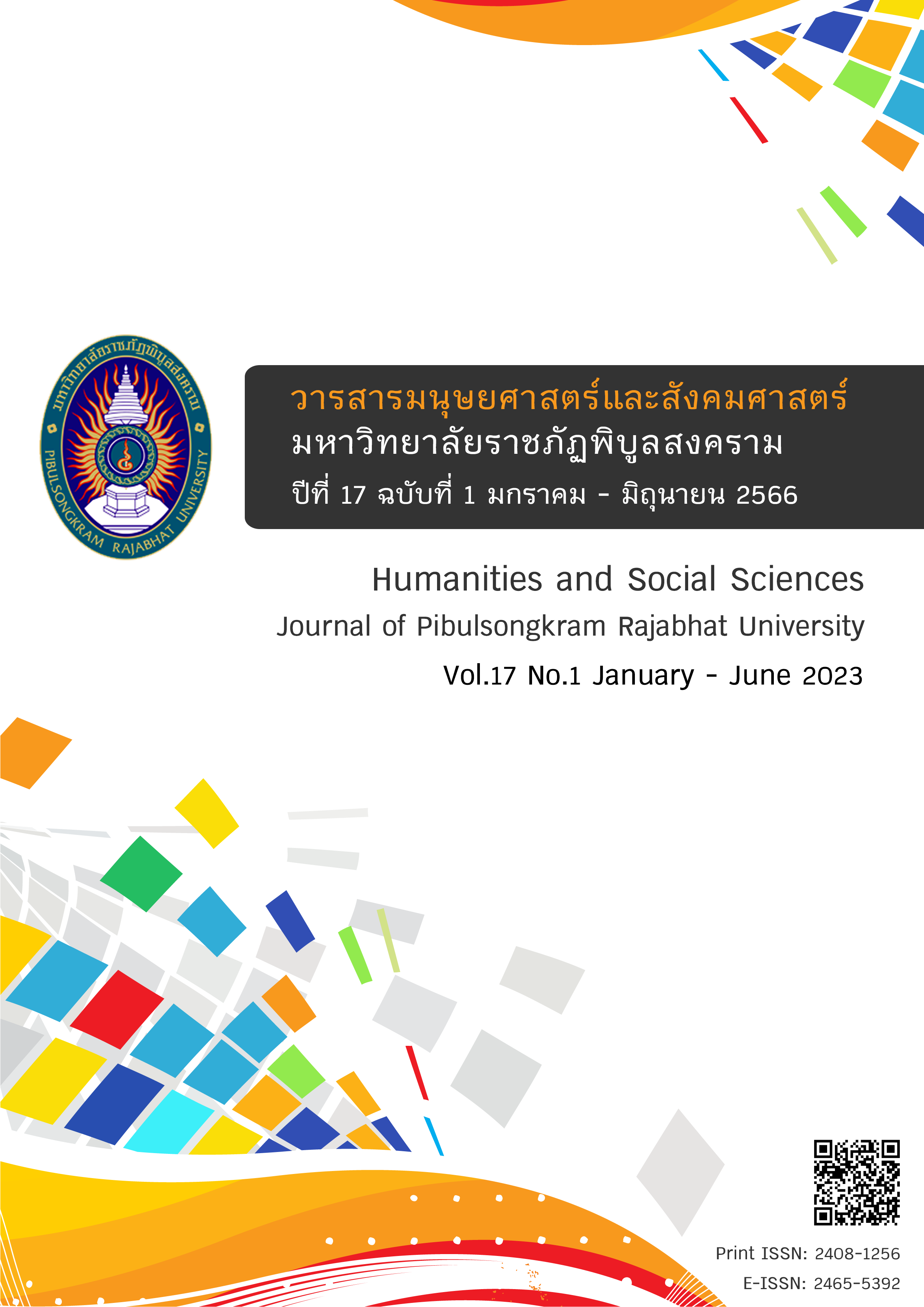Social Entrepreneurship and Livelihood Improvement in Rural Communites: A Case Study of U-thong Ancient City, Suphanburi
DOI:
https://doi.org/10.14456/psruhss.2023.23Keywords:
Social entrepreneurship, Tourism development, State intervention, Rural livelihoodAbstract
This research is a qualitative research aiming at investigating the formation, development and mobilization of social enterprises, as well as their effects on adaptation of livelihood strategy in rural communities. The research was conducted following the case study approach in which 3 case communities were selected purposively for its investigation. These communities were situated in
U-thong Ancient City, a special area designated by the state to mobilize sustainable tourism development project. Data were collected by means of in-depth interview with 20 key informants, coupled with non-participant observation. Data analysis was done using content analysis, typological analysis, data synthesis and interpretation methods. The results of the study revealed that the formation of social entreprises in the area began when a group of leading members conducted activites commonly interested in each community. After that these groups were developed partly through state inteventions to promote social entrepreneurship under the special development project aiming at tourism development linking with history, culture and way of life of local people. This development led to livelihood improvement in various dimensions in accordance with the social entrepreneuship approach, including production and marketing development of local products that supported the improvement of economic self-reliance. Participants in the project had adapted their livelihood strategies towards sustainability as they could reduce vulnerabibilties and increase efficiency in the management of livelihood related adssets at the household level.
References
Chambers, R., & Conway, G. (1991). Sustainable rural livelihoods: practical concepts for the 21st century. IDS Discussion Paper, 296, 1-29. doi:ISBN 0 903715 58 9
Chell, E. (2007). Social Enterprise and Entrepreneurship: Towards a Convergent Theory of the Entrepreneurial Process. International Small Business Journal, 25(1), 5-26. doi:10.1177/0266242607071779
Dees, J. G. (1998). The meaning of 'Social Entrepreneurship'. Stanford University—Graduate School of Business, 1-5. doi:10.2307/2261721
DFID. (1999). Sustainable Livelihoods Guidance Sheets Framework Introduction Vulnerability Transforming. Context, 26-26. doi:10.1002/smj
Doherty, B., Haugh, H., & Lyon, F. (2014). Social Enterprises as Hybrid Organizations: A Review and Research Agenda. International Journal of Management Reviews, 16(4), 417-436. doi:10.1111/ijmr.12028
Farmer, J., De Cotta, T., McKinnon, K., Barraket, J., Munoz, S.-A., Douglas, H., & Roy, M. J. (2016). Social enterprise and wellbeing in community life. Social Enterprise Journal, 12(2), 235-254. doi:10.1108/sej-05-2016-0017
Hockerts, K. (2010). Social Entrepreneurship Between Market and Mission. International Review of Entrepreneurship, 8, 1-22.
Jiao, H. (2011). A conceptual model for social entrepreneurship directed toward social impact on society. Social Enterprise Journal, 7(2), 130-149. doi:10.1108/17508611111156600
McLoughlin, J., Kaminski, J., Sodagar, B., Khan, S., Harris, R., Arnaudo, G., & Mc Brearty, S. (2009). A strategic approach to social impact measurement of social enterprises. Social Enterprise Journal, 5(2), 154-178. doi:10.1108/17508610910981734
Montgomery, A. W., Dacin, P. A., & Dacin, M. T. (2012). Collective Social Entrepreneurship: Collaboratively Shaping Social Good. Journal of Business Ethics, 111(3), 375-388. doi:10.1007/s10551-012-1501-5
Munoz, S., Steiner, A., & Farmer, J. (2015). Processes of Community-led Social Enterprise Development. . Community Development Journal, 50(3), 478-493.
Pearce, J. (2009). Social economy: engaging as a third system? The Social Economy International Perspectives on Economic Solidarity, 22-36.
Peredo, A. M., & Chrisman, J. J. (2006). Toward a Theory of Community-Based Enterprise. Academy of Management Review, 31(2), 309-328. doi:10.5465/amr.2006.20208683
Romani-Dias, M., Iizuka, E., Larroudé, E., & Barbosa, A. (2018). Mapping of Academic Production on Social Enterprises: An international analysis for the growth of this field. International Review of Social Research, 8(2), 156–171.
Roy, M. J., Donaldson, C., Baker, R., & Kerr, S. (2014). The potential of social enterprise to enhance health and well-being: a model and systematic review. Soc Sci Med, 123, 182-193. doi:10.1016/j.socscimed.2014.07.031
Scarlato, M. (2013). Social Enterprise, Capabilities and Development Paradigms: Lessons from Ecuador. The Journal of Development Studies, 49(9), 1270–1283.
Yunus, M. (2006). Nobel Lecture. Retrieved from https://www.nobelprize.org/prizes/peace/2006/yunus/26090-muhammad-yunus-nobel-lecture-2006-2/
Yunus, M. (2010). Building Social Business – The New Kind of Capitalism that Serves Humanity’s Most Pressing Needs. New York: Public Affairs.
Downloads
Published
How to Cite
Issue
Section
License
Copyright (c) 2022 Humanities and Social Sciences Journal of Pibulsongkram Rajabhat University

This work is licensed under a Creative Commons Attribution-NonCommercial-NoDerivatives 4.0 International License.
Any articles or comments appearing in the Journal of Humanities and Social Sciences, Rajabhat Phibulsongkram University, are the intellectual property of the authors, and do not necessarily reflect the views of the editorial board. Published articles are copyrighted by the Journal of Humanities and Social Sciences, Rajabhat Phibulsongkram University.









